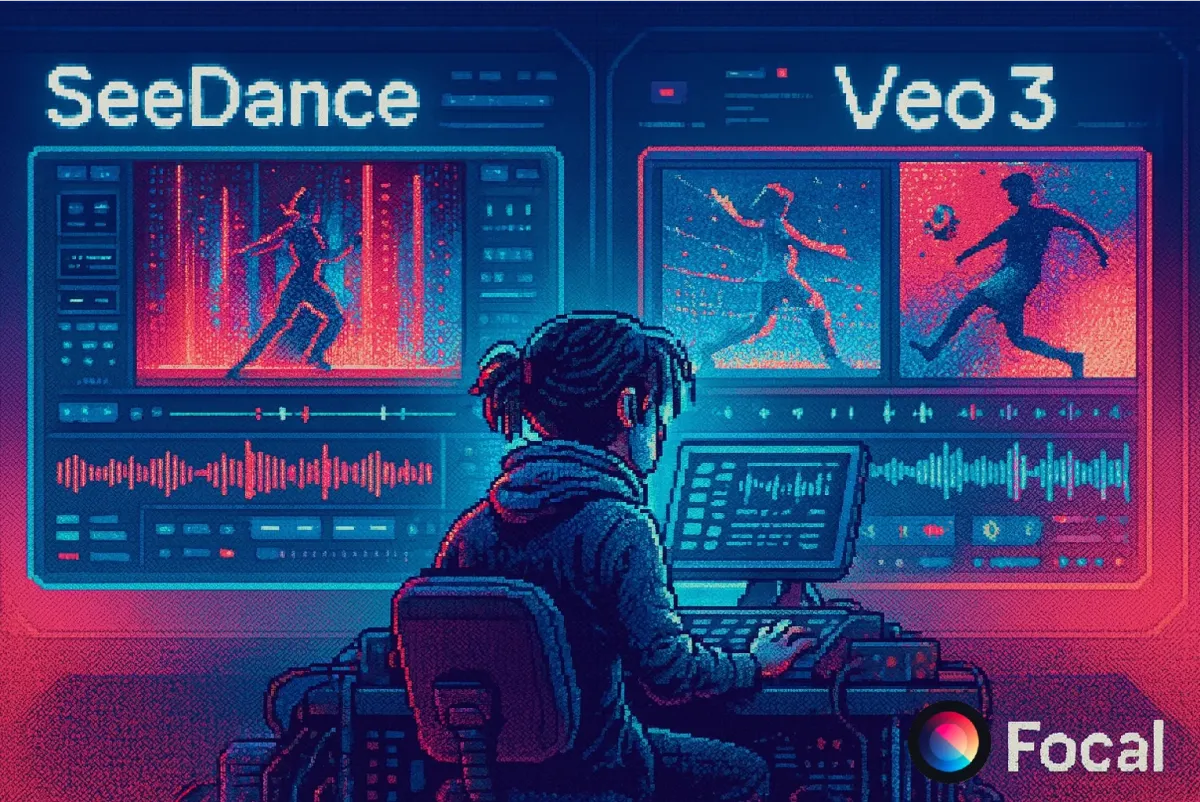SeeDance vs Veo 3: Which AI Video Generator Delivers Better Output?

Here’s a quick look at what this breakdown covers:
- AI Video Rendering Comparison: Seedance vs Veo 3 Speed and Workflow
- Output Rendering Table: SeeDance 1.0 vs Veo 3
- Visual Quality in AI-Generated Videos
- Prompt Accuracy in AI Videos
- Audio in AI Video Generation
- Cost Efficiency in AI Video Generation
- Best Use Cases Based on Output Strength
- Final Breakdown
- Pro Workflow Tip
- Ready to Try Both and See What Works Best?
AI Video Rendering Comparison: Seedance vs Veo 3 Speed and Workflow
Both SeeDance 1.0 and Veo 3 generate visually rich video clips from text prompts, but their approach to rendering is different enough to impact workflow speed and usability.
Output Rendering Table: SeeDance 1.0 vs Veo 3
| Feature | SeeDance 1.0 | Veo 3 |
|---|---|---|
| Resolution & Framerate | Up to 1080p, 24 FPS | 1080p, 24 FPS |
| Output Speed | ~41 seconds for a 5-second clip | ~45–60 seconds for an 8-second clip |
| Multi-Shot Video | Yes – scene transitions supported | Partial / basic support |
| Motion Quality | Cinematic and smooth | Good, but less consistent |
| Prompt Precision | High – accurate camera and scene | Moderate to strong |
| Audio Output | No (visuals only) | Yes – auto audio, synced voice support |
| Pricing Model | Pay-per-video (~$0.50 per 5 sec) | Subscription tiers ($20–$250/month) |
Visual Quality in AI-Generated Videos: Motion, Detail, and Stability
- SeeDance Output
- Smooth transitions between frames
- Cohesive motion across multi-shot scenes
- Stable lighting and consistent subject placement
- Veo 3 Output
- Visually impressive single scenes
- High detail but occasional jitter or scene drift
- Works best for short cinematic visuals
SeeDance is the more stable choice for creators building sequences, while Veo 3 is better at creating punchy, high-impact clips with a single perspective.
Prompt Accuracy in AI Videos: How Each Model Handles Complex Commands
When it comes to interpreting user prompts with camera direction, emotional tone, and scene logic, SeeDance has a clear lead. It handles nested instructions like “a wide shot panning into a close-up during golden hour” with higher consistency.
Veo 3 is responsive to short, visual-centric prompts, especially when dialogue and sound are involved — but struggles with layered camera logic or multi-subject choreography.
Audio in AI Video Generation: Dialogue, Effects, and Voiceover Support
This is where Veo 3 shines. It includes:
- Auto-generated sound effects
- Synchronized lip movement for dialogue
- Background ambiance and music layers
SeeDance currently outputs visuals only, which is perfect if your pipeline already includes custom audio mixing. For many creators, silent output is a feature — not a flaw — allowing more control in post.
Cost Efficiency in AI Video Generation: Price vs Value
SeeDance’s pay-per-output model makes it highly scalable for studios and indie creators alike. Veo 3’s subscription pricing can make experimentation expensive, especially at higher tiers or commercial scale.
For creators producing content daily, SeeDance offers more video per dollar — especially for short, modular clips that can be reused across formats.
Best Use Cases Based on Output Strength
| Use Case | Recommended Model |
|---|---|
| Multi-shot narrative or transitions | SeeDance |
| Voice-led monologues | Veo 3 |
| Visual loop animations | SeeDance |
| Short cinematic scene with dialogue | Veo 3 |
| Budget-sensitive projects | SeeDance |
| Branded trailers or interviews | Veo 3 |
Final Breakdown: Which AI Model Creates Better Output?
| Category | Winner |
|---|---|
| Render Speed | SeeDance |
| Multi-Shot Capability | SeeDance |
| Prompt Responsiveness | SeeDance |
| Visual Stability | SeeDance |
| Audio Output | Veo 3 |
| Cinematic Effects | Veo 3 |
| Cost Efficiency | SeeDance |
Pro Workflow Tip: Use Both Tools for the Best Results
To get cinematic video without wasting time or compute:
- Use SeeDance to generate base visuals — quick, coherent, and multi-shot.
- Use Veo 3 to overlay audio and polish specific shots with cinematic-grade sound.
- Final cut in post-production using editing tools or external render pipelines.
This hybrid approach gives you speed, control, audio sync, and narrative depth — all while keeping costs predictable.
Ready to Try Both and See What Works Best?
If you're curious how this combo actually plays out in real workflow, the best way to figure it out is just to try both. Use SeeDance for the heavy visual lifting, then layer in audio or polish shots with Veo 3. You’ll see pretty quickly which model handles what part of the process better for your style. No need to guess or commit before seeing what feels right.
That’s exactly why we’ve brought both models into Focal. It’s a creative workspace where you can run multiple AI tools in one place, so testing SeeDance and Veo 3 side by side feels seamless—not like juggling platforms.
Test SeeDance and Veo 3 side by side inside Focal. Compare motion, clarity, and pacing without switching tools.
📧 Got questions? Email us at [email protected] or click the Support button in the top right corner of the app (you must be logged in). We actually respond.
